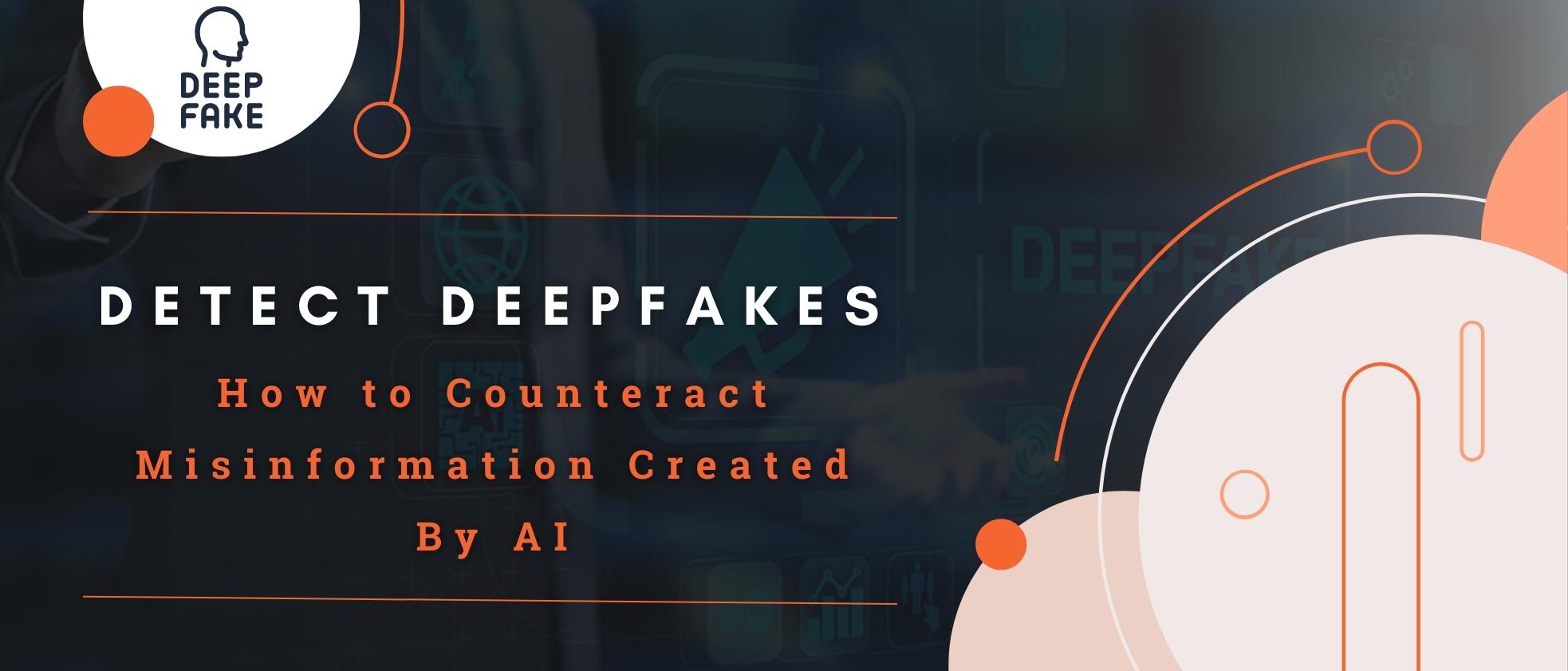Detect Deepfakes: How to Counteract Misinformation Created By AI

In today's world, where misinformation and fake news are rampant, deepfakes have become a growing concern. Deepfakes are videos or images created using AI technology that manipulate and alter visual or audio content to make it appear as if something happened that never actually occurred. The use of deepfakes has risen in recent years, causing significant concern about the potential for disinformation campaigns and the impact they could have on politics, society, and individual reputations.
Despite the potential benefits of AI and machine learning technologies in improving people's lives, there are instances where individuals use these technologies to create deepfakes that can defame and wrongly influence people. The irresponsible use of deepfakes can lead to the rapid spread of disinformation, which can pose significant threats to individuals and organizations alike. It is therefore crucial to address the issue of deepfakes to prevent their misuse and limit the harm they can cause.
How good are DeepFake videos?
Deepfake videos have become increasingly sophisticated in recent years, thanks to advancements in AI and machine learning technologies. These videos can be incredibly convincing, often indistinguishable from genuine, unaltered footage.
Deepfake videos work by training machine learning algorithms to learn the movements, expressions, and speech patterns of the person being impersonated. The algorithms then use this information to generate new video content that appears to be a perfect match for the original footage.
Cyber threats associated with deepfake videos.
- Disinformation Campaigns: Deepfake videos can be used to spread false information and manipulate public opinion.
- Financial Fraud: Deepfakes can be used to commit financial fraud by impersonating individuals and convincing others to transfer money or reveal sensitive information. For example, a deepfake video of a CEO or other high-ranking official could be used to trick employees into transferring funds to a fraudulent account.
- Blackmail and Extortion: Deepfakes can be used for blackmail and extortion, particularly in the context of revenge porn.
- Identity Theft: Deepfakes can be used to impersonate individuals and gain access to their personal information, such as bank account details, passwords, and other sensitive data. This information can then be used to commit identity theft, financial fraud, and other cybercrimes.
What is the extent of people's ability to distinguish between a video that has been manipulated by AI and a video that has not been altered?
It can be challenging for ordinary people to tell the difference between a video manipulated by AI and a normal, non-altered video. Deepfake videos can be highly convincing and can mimic realistic movements and facial expressions, making them difficult to spot with the naked eye. In some cases, even experts can be fooled by a well-made deepfake.
However, there are several visual and audio cues that can indicate a video is a deepfake. Detecting a DeepFake can be challenging, as these videos can be highly convincing and difficult to distinguish from real videos. However, there are a few techniques that can be used to identify a DeepFake:
- Educate yourself: The first step in combating deepfakes is to understand what they are and how they work. Learn about the technology and the ways it can be used to manipulate video and audio. This can help you recognize deepfakes when you encounter them and avoid falling for misinformation.
- Check the source: Always verify the source of a video or audio clip before sharing it. Look for trusted news outlets or official sources, and be wary of videos shared on social media or through messaging apps.
- Analyse the content: Look for visual and audio cues that may indicate a video is a deepfake. For example, look for unnatural movements or expressions, mismatched lip movements, or unusual lighting. Listen for inconsistent audio quality or changes in tone.
- Use technology: There are now several tools available to help detect deepfakes. Some of these use machine learning algorithms to analyze the video or audio for inconsistencies, while others use facial recognition technology to compare the individual in the video to known images of that person.
- Consult experts: If you suspect a video is a deepfake, consult with experts in the field of digital forensics or cybersecurity. They can help analyse the video and determine whether it's authentic or not.
- Raise awareness: Help educate others about deepfakes and the dangers of misinformation. Share information about how to detect deepfakes and encourage others to be sceptical of video or audio content that seems suspicious.
In conclusion, detecting deepfakes can be challenging, but by verifying the source, looking for inconsistencies, analyzing the audio, using specialized tools, consulting with experts, and raising awareness, you can help counteract the spread of misinformation created by AI. It is essential to remain vigilant and informed to prevent the misuse of deepfakes and limit their potential harm to individuals and society.
For more information on cyber security services, cyber forensic services connect with ANA Cyber Forensic Pvt Ltd. Call us at +91 - 9011041569
Contact
For more information on how we can help you secure your data, get you compliant and protect your business, please complete the form below and one of Information security / Cyber Forensic expert and Compliance specialists will respond to you as soon as possible.


